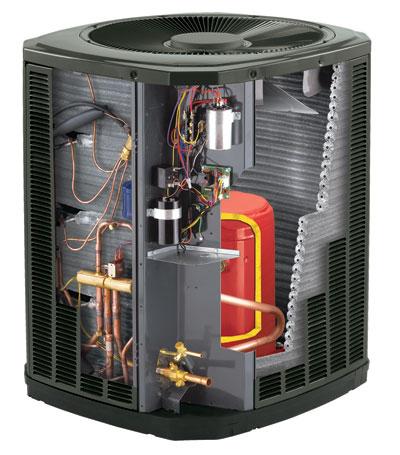 Very few of us are lucky enough to live in an area where it’s gloriously warm and sunny all year round. So if we’ve doled out hundreds (or even thousands) on an air conditioning unit to keep us comfortable during the summer months, it surely isn’t asking too much that it is also able to keep us warm during the winter months right? Especially if we’re looking to tighten our purse strings.
Very few of us are lucky enough to live in an area where it’s gloriously warm and sunny all year round. So if we’ve doled out hundreds (or even thousands) on an air conditioning unit to keep us comfortable during the summer months, it surely isn’t asking too much that it is also able to keep us warm during the winter months right? Especially if we’re looking to tighten our purse strings.
Boilers are not only expensive to purchase and install but they are obscenely expensive to maintain so choosing between an air conditioning unit and a heater should be a difficult one if you live in an area where the amount of cold days are equidistant to the amount of hot days. But that’s before you factor into the equation the fact that many air conditioning units can actually be used as space heaters too.
But how does a device built to extract hot air from a room also provide heat? The answer is actually quite simple.
Heat Pump
In scientific parlance, the term ‘heat pump’ refers to a device that moves heat from one location to another location and by this definition, an air conditioner (and by extension even a refrigerator) is a heat pump as it’s used (traditionally) to create a temperate atmosphere by moving heat around. Technically, any device that can potentially be used to provide heating and cooling to the same space is considered a heat pump and as the name suggests, this means that any heat pump can be used as a heater. The basic scientific principal is almost identical to the way in which the air conditioner works its cooling ‘magic’, only in this instance, the cycle is being reversed.
How does an air conditioning work?
To understand the basics, you really need to get your head around the ‘vapour-compression refrigeration cycle’, a principal which is the same whether your air conditioner is the size of a coffee table or a small car. The process works via a chemical refrigerant that carries heat from one part of the system to another and then releases it.
First the chemical is compressed into a high pressure, intensely hot gas that is then pumped into a long tube called a ‘coil’. As the refrigerant (most likely a chemical called ‘Freon’) flows through the coil and heat is extracted through a fan. After it has cooled down, the gas is transformed back into a liquid state and is then passed into an expansion valve, which lowers the pressure of the chemical before pumping into the ‘evaporator’.
Effectively another coil, the evaporator is where the chemical turns into a gas by pulling heat from the air. As gas absorbs the heat, the cold air produced is blown into the room.
It is essentially a complicated but efficient way of transferring heat from the inside to the outside.
So is the heater simply a reversal process?
In short yes! With the addition of a reversing valve, the flow of energy can be reversed, effectively transforming the air conditioner into a heater! Air conditioning units that are able to do this will have a specific ‘heating mode‘. When this mode is engaged, the flow of coolant shifts direction so that the hot coils become cold and the cold coils become hot. Whereas when it’s in standard mode, the cold air gets pumped into the room and the warm air gets expelled outside, when heating mode is engaged, the warm air gets pumped into the room and the cold air gets expelled.
Why use an air conditioner as a heat pump instead of a conventional heater?
For two reasons really – the economic and the environmental (as well as the obvious extra space). A heat pump will generally use less electricity than a heater because conventional resistance heaters actually convert the electricity itself into heat. A heat pump though is taking advantage of natural processes so the electricity used to operate it is only used to power the individual components in the device, not create the heat. This means heat pumps are far more energy efficient.
Heat pumps are becoming more popular as we become more environmentally conscious and tighter fisted when it comes to where and how we spend our money. There are factors to keep in mind however if you’re considering jumping on the bandwagon.
For one, even portable heat pumps need to be vented outside so there is always some form of ‘installation’ or ‘assembly’ required and even in heating mode, the air is still being ‘conditioned’ which means the humidity will still be removed from the air (so you’ll need to empty the ‘condensation tank’ on occasion). Also a heat pump will not be as effective as a conventional heater if the temperature of the room is too low (below 45 fahrenheit) as it’s less efficient to move heat when temperatures are close to freezing.
Installation
Of course if your unit is installed properly many of these issues will be circumvented entirely. Hiring a local firm such as InterstateAir.com means that you’ll have an experienced, thoughtful staff on hand to show you how to operate your system and what to do if there are any problems with it.
So is it sensible to use your air conditioning unit as a heater? Absolutely, but make sure you do your research first!
AUTHOR: George Torres owns a small air conditioning company that actively promotes the use of air conditioners during the winter months as it can then be used all year round!
 How to Tap into Renewable Financing for Energy Upgrades Without PACE
How to Tap into Renewable Financing for Energy Upgrades Without PACE 8 Cool Decor Pieces to Veganize Your Home
8 Cool Decor Pieces to Veganize Your Home What’s the Big Deal about Home Performance Analysis?
What’s the Big Deal about Home Performance Analysis?
Definitely vent to the exterior. I’ve seen heat pumps vented inside and it’s dangerous.
Thank you Mark, good point.
I have an air conditioner with a heat function I have it turned on yetnothing but cold air is coming out how do I get heat?
Hi Angel, did you check out that Whirlpool forum that we have the link to in this article under the word “research” There you should find more info about using your AC as a heater. Good luck and be careful to read directions 🙂
Please help.
I need to heat a room, up to 40 degrees celcius , economically and environmental friendly as well.. I was thinking air-conditioners, but how high can I push the heat and how reliable is it?
I will really appreciate your input
Regards
Dorothy
I want to purchase a product
to keep the room up 35 to 40 degree in winter season
with regards
I have a Kenmore AC/Heater can I run the heater part of the A/C unit with a cover on the back of it?